
USS Culgoa (AF-3) was a refrigerated supply ship in the United States Navy.
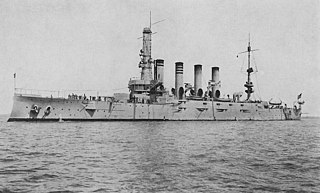
The first USS West Virginia (ACR-5/CA-5), also referred to as "Armored Cruiser No. 5", and later renamed Huntington, was a United States Navy Pennsylvania-class armored cruiser.

USS Cuyama (AO-3) was a tanker of the United States Navy launched 17 June 1916 by Mare Island Navy Yard; sponsored by Miss M. Offley; and commissioned 2 April 1917.

The first USS Henderson (AP-1) was a transport in the United States Navy during World War I and World War II. In 1943, she was converted to a hospital ship and commissioned as USS Bountiful (AH-9).

USS Refuge (AH-11), was a hospital ship of the United States Navy during World War II. The ship was built in 1921 by the New York Shipbuilding Corp., of Camden, New Jersey, as SS Blue Hen State, but was renamed President Garfield in 1923 and then SS President Madison in 1940 for service with American President Lines. Acquired by the Navy from the War Shipping Administration on 11 April 1942 the ship was commissioned as the transport USS Kenmore until conversion to a hospital ship.

USS Samaritan (AH-10) was a hospital ship that served with the US Navy in World War II. Prior to that, she served as a US Navy transport ship under the name USS Chaumont (AP-5).

The first USS Bridge (AF-1) was a stores ship in service with the United States Navy from 1917 to 1946. Following a short commercial service, she was scrapped in 1953.

USS Yosemite (AD-19) was a Dixie-class destroyer tender built during World War II for the U.S. Navy. Her task was to service destroyers in, or near, battle areas and to keep them fit for duty.

USS Arctic (AF-7) was an Arctic-class stores ship acquired by the United States Navy shortly after World War I, which saw extensive service in World War II. She served in the Pacific Ocean, delivering food and household items to ships and bases.

USS Celtic (AF-2) was a Celtic-class stores ship acquired by the U.S. Navy for use in the Spanish–American War. She served again during World War I in the dangerous North Atlantic Ocean, delivering general goods and ammunition to American Expeditionary Force troops in Europe.

USS Glacier (AF-4) was a Glacier-class stores ship acquired by the U.S. Navy for use in the Spanish–American War. She served again during World War I in the dangerous North Atlantic Ocean, delivering general goods and ammunition to American Expeditionary Force troops in Europe.

USS Roamer (AF-19) was the Danish refrigerated motorship African Reefer, completed 1935, of the J. Lauritzen shipping company which had put in at Madeira after Germany occupied Denmark. The ship later sailed to a U.S. port on assurances it would be treated equally with U.S. vessels chartered for war purposes. Instead it was seized by the United States Maritime Commission and placed in service under War Shipping Administration (WSA) allotment to commercial, Army transport and finally Navy use at half the rate paid for U.S. ships. The agreed to rate was not restored until 1958 after a Supreme Court judgement and Congressional action.

USS Taurus (AF-25), formerly SS San Benito, was a refrigerated banana boat of the United Fruit Company that may have been the first merchant ship to be built with turbo-electric transmission. From October 1942 to December 1945 she was a United States Navy stores ship in the Pacific Ocean theatre of World War II. She was scrapped in 1953.
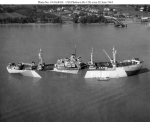
USS Phobos (AK-129) was a Crater-class cargo ship commissioned by the U.S. Navy for service in World War II. She was responsible for delivering troops, goods and equipment to locations in the war zone.

USS Kerstin (AF-34) was an Adria class stores ship in service with the United States Navy from 1945 to 1950.
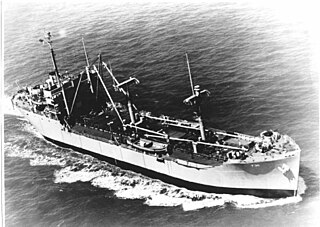
USS Lioba (AF-36) was an Adria-class stores ship in service with the United States Navy from 1945 to 1955. She was scrapped in 1973.
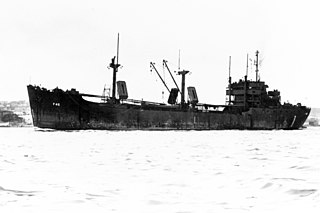
USS Lucidor (AF-45) was an Adria-class stores ship in service with the United States Navy from 1945 to 1946. She was sold into commercial service in 1967 and was lost in 1977.

USS Hunter Liggett (APA-14) was built as an Emergency Fleet Corporation (EFC) Design 1029 ship. It was launched as Palmetto State, and shortly after, renamed Pan America for operation as the United States Shipping Board (USSB) owned liner operated by the Munson Steamship Line on New York to South American service. The ship was acquired by the War Department in February 1939, where it was once more renamed. The new Hunter Liggett was then ready for operation, as a United States Army transport vehicle mainly running between New York and San Francisco.
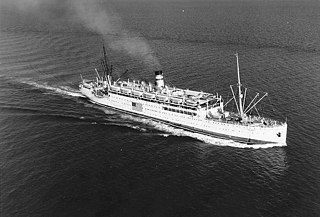
USS U. S. Grant (AP-29) was a transport ship that saw service with the United States Navy in World War II. Originally a German ocean liner named König Wilhelm II, she was seized by the United States during the First World War and renamed USS Madawaska (ID-3011) in 1917 before being renamed USS U. S. Grant (AP-29) in 1922.

SS Point Bonita was constructed in 1918 and launched 27 March 1918 after a hull being built for foreign owners at Albina Engine and Machine Works was requisitioned during World War I by the United States Shipping Board (USSB). The ship saw service as the Navy transport USS Point Bonita, assigned Identification Number 3496, from 7 October 1918 to 7 April 1919, was returned to the USSB and saw civilian service with several commercial companies as San Pedro and Oliver Olson before again seeing service in World War II as USS Camanga (AG-42). After return to commercial service as Oliver Olson the ship was wrecked at the entrance to Bandon harbor in Oregon.




















